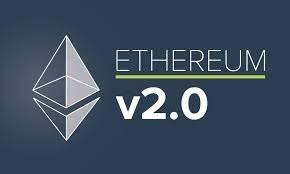What Is Ethereum 2.0 and how does it work
What Is Ethereum 2.0, the long-awaited Ethereum blockchain update might finally arrive this summer.
Ethereum co-founder Vitalik Buterin claimed last week at the ETH Shanghai Web 3.0 Developer Summit that “the merging” will be finished this summer. This revolutionary change will convert Ethereum from a proof-of-work to a proof-of-stake consensus paradigm.
What Is Ethereum 2.0 all about
Ethereum 2.0 is a new version of the Ethereum blockchain that will use staking to verify transactions using a proof of stake consensus process. The proof of work paradigm, in which cryptocurrency miners employ high-powered computers to solve complicated mathematical computations known as hashes, will be replaced by Ethereum 2.0’s staking mechanism.
To authenticate Ethereum transactions before they are recorded on the public blockchain, the mining process demands an ever-increasing quantity of electricity. Systems that use proof of work consume a lot of electricity. Bitcoin mining, for example, presently requires 127 terawatt-hours of electricity annually (TWh). That is currently more than the entire country of Norway’s power consumption.
ETH presently consumes nearly the same amount of energy as Finland and has a carbon footprint comparable to Switzerland. Thankfully, the merger is expected to lower Ethereum’s carbon footprint by up to 99.95%, resolving one of the cryptocurrency’s primary objections. What Is Ethereum 2.0
What’s the Difference Between Ethereum and Ethereum 2.0?
Since April 2022, Ethereum has been running two blockchains in parallel: one that uses proof of work and another that uses proof of stake. The Ethereum Mainnet network (ETH1) and the new Beacon Chain (ETH2) will be merged into a single blockchain.
The ETH1 and ETH2 terms were recently dropped by Ethereum developers due to fears that they might confuse consumers ahead of the unification. What Is Ethereum 2.0
Some investors may have been perplexed by what appears to be two versions of Ether, the Ethereum Network’s native cryptocurrency, on Coinbase and other popular cryptocurrency exchanges.
Users’ Ether is converted to ETH2 when they stake it on Coinbase, and the values of ETH and ETH2 are similar. These two versions of Ether will be united into a single token once the merge is complete.
Staking is replacing mining on Ethereum
Once the integration is complete, staking will be used to verify Ethereum transactions instead of mining. To participate in the transaction verification process, users must stake a particular amount of cryptocurrency. An algorithm chooses which validator gets to add the next block to a blockchain depending on how much cryptocurrency the validator has risked in a proof-of-stake architecture.
To become an Ethereum validator, investors must invest at least 32 ETH. At the moment, there are over 300,000 Ethereum validators. What Is Ethereum 2.0
The more ETH each validator invests, the more blocks that validator is likely to produce. For handling validation obligations, a validator earns incentives in Ethereum each time he or she produces blocks. The staking return on Ethereum’s Beacon Chain now ranges from 4.3 percent to 5.4 percent each year (APR).
Ethereum vs. Bitcoin
The two most popular cryptocurrencies are Bitcoin and Ethereum, which together account for 63.6 percent of the worldwide crypto market capitalisation.
In the last three years, the price of Ethereum has increased by 648 percent, more than doubling the 250 percent increase in the price of Bitcoin. What Is Ethereum 2.0
From an ESG standpoint, the merger will make Ethereum a more appealing investment than Bitcoin, but it will not necessarily make Ethereum a danger to Bitcoin’s position as the world’s top crypto.
